Lowell Week in Review: August 20, 2016
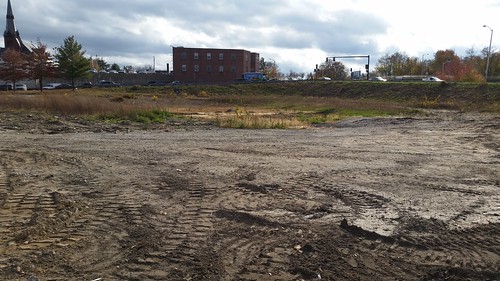
Site of Lowell Judicial Center from Jackson St. Lord Overpass in background.
Judicial Center Groundbreaking
The long-awaited ground-breaking for the new Lowell Judicial Center will happen next month, according to a report by Chris Scott on his Column Blog. Governor Charlie Baker will come to Lowell on Thursday, September 22, 2016 to lead the ceremony.

Architect’s model of Lowell Judicial Center. Lord Overpass in upper right.
The Judicial Center will house Superior Court, District Court, Probate Court, Juvenile Court, Housing Court, the Middlesex North Registry of Deeds, and related offices. The seven-story, $200+ million building will take 30 months to construct on the now-vacant lot between Jackson Street and Middlesex Streets, just to the northeast of the Lord Overpass.
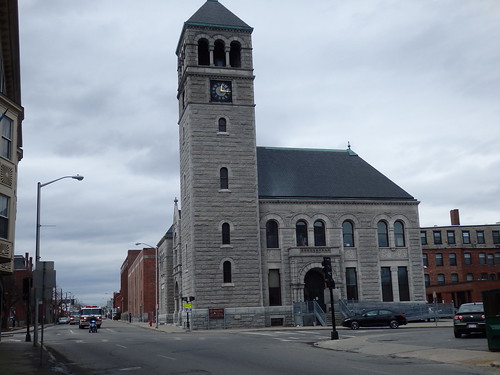
Juvenile Court, corner of Gorham and Appleton streets.
With construction soon to get underway on the new building, interest in what is to become to the current courthouses should grow. The Juvenile Court, at the corner of Gorham and Appleton streets, is only leased by the state, so the building owners will face the prospect of finding new tenants for the large granite building that first opened in 1898 as the Lowell post office.
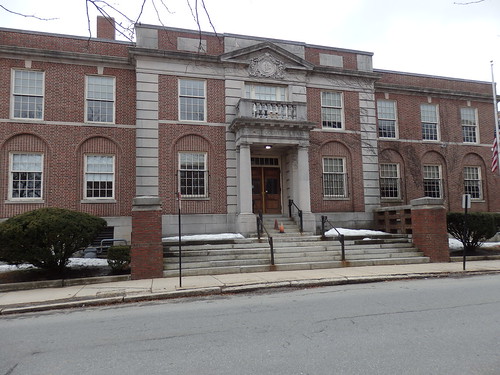
Lowell District Court on Hurd St.
The two state-owned courthouses to be vacated, the Superior Courthouse on Gorham Street and the Lowell District Court on Hurd Street, will be offered to other governmental entities at no cost. If no one in government wants them, the buildings will be sold at auction to the highest bidder. I assume the District Court will be the easiest to dispose of. Both UMass Lowell and MIddlesex Community College have a presence in the immediate vicinity, so the building would be a logical addition for either school. There has also been occasional talk about the Lowell Police Department moving into the building, but I’m not sure it would be much of an improvement from the LPD’s current quarters in the JFK Civic Center, so I suspect that is unlikely.
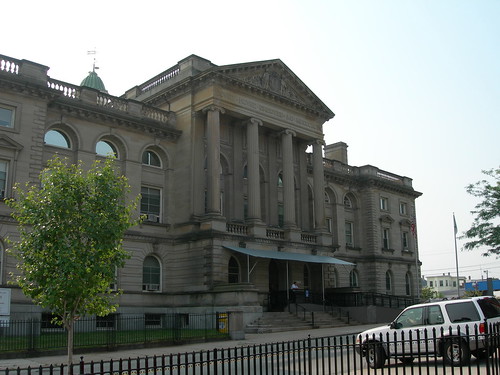
Lowell Superior Courthouse on Gorham St.
The Superior Court will pose a bigger challenge but also has the potential for a much bigger payoff. Located 100 yards from the Lowell Connector, a 10 minute walk across the South Common from the train station, and a 15 minute walk from downtown, the Superior Courthouse is strategically located. While it is an older building, it is fully accessible thanks to an elevator that was added five years ago, and it comes with its own parking and greenspace. The state will not formally declare the building surplus until the current occupants move out, but there is no point in waiting for three years to start thinking about the future use of the building. The Lupoli project on Thorndike Street seems to be full-speed-ahead, and the city has received funding to build and light a walkway across the South Common from the train station almost to the Superior Courthouse, and just last summer, the Coalition for a Better Acre opened its Gorham Street Apartments on the site of the former St. Peter’s Church, so there is much development momentum in the neighborhood. Starting to talk about the reuse of the Superior Courthouse now instead of 30 months from now could take advantage of all that positive energy.
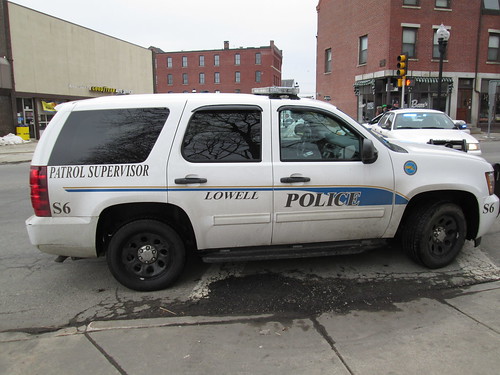
Lowell Police 2015 Annual Report
The Lowell Police Department will officially present its 2015 Annual Report to the city council at Tuesday night’s meeting. Based on the statistics in the report, the criminal sessions in the new courthouse might be less-busier due to the declining crime rate. Incidents of almost all major categories are down substantially from the prior year: robberies -22%; aggravated assaults -21%; burglaries -24%; armed robberies -65%; firearms incidents -32%; shots fired incidents -43%; and non-fatal shootings -53%.
As of December 31, 2015, the LPD’s budgeted table of organization called for 245 officers although there were just 239 on the force at the time of which 216 are male and 23 female. Of the 239 officers, 190 are Caucasian, 33 are Hispanic, 11 are Asian, and 5 are African American. Grade-wise, there is 1 superintendent, 2 deputy superintendents, 9 captains, 13 lieutenants, 30 sergeants, and 184 officers.
While the focus of the police department has been on preventing crimes of violence, the opioid epidemic and crime associated with it have taken much of the attention of LPD. The report states “While the opioid addiction and overdoes epidemic has affected all of Massachusetts, it has been particularly devastating in Lowell,” with 579 confirmed opioid overdoses in the city in 2015 including 46 fatalities. Many of those who overdosed did so multiple times. Much of the property crime in Lowell is committed by addicted individuals in search of money for drugs, and much of the violent crime arises from competition among drug-dealing gangs and individuals.
Besides traditional law enforcement tactics, the Lowell Police have responded to the drug epidemic by (1) deploying the overdose-reversing drug naloxone to its patrol cars (it has been used numerous times to revive OD-ing invididuals); and (2) combining with city building inspectors in a Drug Abatement Response Team (DART) that descends on drug-involved properties to get rid of the dealers and to get the properties fixed up.
Civic Ready
The city has replaced its old Code Red citizen notification service with a new application called Civic Ready. To get the alerts, go to the Civic Ready Sign Up page, enter your email address, and select the types of alerts you’d like to receive and communications method (telephone, text, email) by which you will receive them.
Multimodal Transit Study
Earlier in the summer, the council passed a motion by Corey Belanger that called for city government to work with Lowell Regional Transit Authority “to implement rental multimodal transportation from Gallagher Terminal to points of interest in Lowell.” At Tuesday’s meeting, the council will receive a preliminary but very extensive response from the city’s Department of Planning and Development that reviews current transit options from the LRTA’s Gallagher Terminal, but also provides many options and recommendations the city might consider in the future. A cover memo from City Manager Kevin Murphy urges councilors to refer the report to the council’s Transportation Subcommittee as the starting point of an in-depth discussion on the various issues raised by the report (which was done in-house by DPD staff).
The report begins by helpfully defining the term “multimodal transportation.” It means a single person using more than one type of transportation in a trip. For example, if you drive to the train station and then take commuter rail to Boston, that’s multimodal. If you ride your bike to a bus stop and then take the bus to work, that’s multimodal. The report points out that walking is a frequently forgotten mode in a multimodal system.
Because Lowell’s streets were designed for a system that used streetcars, horses, and pedestrians, it is difficult to transform Lowell’s roads into a car driver’s paradise. But the report points out that the challenge posed by an old street layout also presents an opportunity. Since many young professionals today don’t want to drive, a city that utilizes its 19th century street grid to maximize the availability of multimodal transportation (that is, the combination of mass transit, bikes, and walking), is most likely to attract the highly-skilled, highly-paid workers of tomorrow and the companies that employ them.
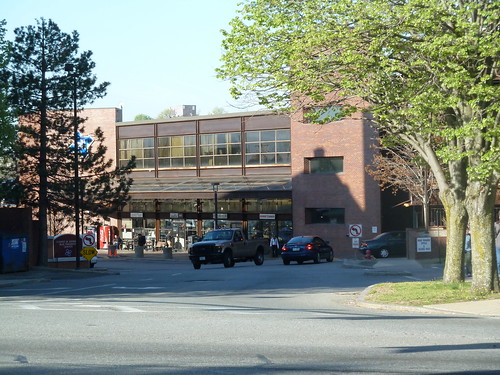
LRTA’s Gallagher Terminal
The report tactfully points out that Lowell, and especially its LRTA partner, have a long way to go to create a usable multimodal system. Of many examples of the current deficiencies cited in the report, one that stands out to me is pedestrian access to the Gallagher Terminal for someone coming from the Highlands or the Acre. If you approach from that side in your car, you can pull right into the parking garage from the Westford/Chelmsford Street intersection. But come that way on foot, and you’re confronted by a “No Pedestrians” sign at the entrance to the garage, so you have to walk to the Lord Overpass and then down Thorndike Street to that entrance to the terminal. The detour adds ten minutes to your walk.
But the report is more about looking to the future than criticizing past decisions. Its thoroughness deserves a post of its own which I will do later this week. Hopefully the council will see this as the important document that it is and will devote substantial time and consideration to its suggestions at future meetings.
45 Plays for 45 Presidents
The Merrimack Repertory Theatre opens its new season on September 7, 2016 with 45 Plays for 45 Presidents which devotes two minutes to each of our nation’s 45 presidents (OK, we’re only at 44 but the play will include something about the candidates in this year’s election).
Participants in yesterday’s Lowell Walk got an extra treat when, at the conclusion of the tour at Lowell Memorial Auditorium, Elizabeth Kegley, the Executive Director of the MRT and a regular participant in Lowell Walks, invited us over to the MRT’s space at Bagshaw Mills to sit in on a live rehearsal of 45 Plays. The parts I saw were both hilarious and infused with American history. While I have always admired actors for their work, getting even a short glimpse of how they and their director (the MRT’s own Sean Daniels) bring a play to the stage was hugely impressive.
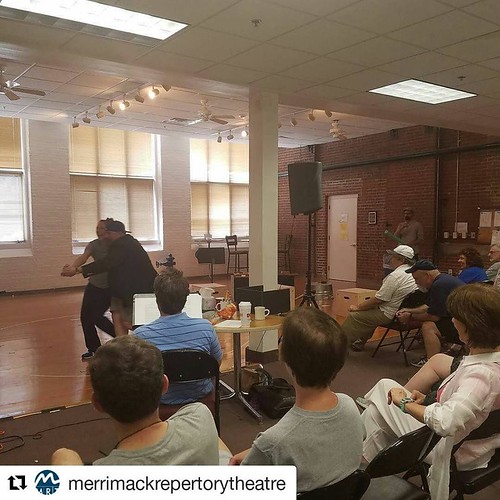
Watching MRT actors rehearsing 45 Plays for 45 Presidents. Photo courtesy MRT.
Today, many voters are left feeling that the comments and controversies of this year’s presidential election are dragging us into unexplored territory. But as Harry Truman once said, ”the only thing new in the world is the history you have not yet read.” With that in mind, I suspect that forgotten controversies from American history that will be portrayed in this play will seem completely current. To be so enlightened, while at the same time laughing continuously, seems like a pretty good way to spend an evening this fall. Check out the MRT website for ticket information.